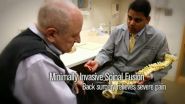Scientists at Rice analyzed patterns of graphene - a single-atom-thick sheet of carbon - grown in a furnace via chemical vapor deposition. They discovered that the geometric relationship between graphene and the substrate, the underlying material on which carbon assembles atom by atom, determines how the island shapes emerge.
The study led by Rice theoretical physicist Boris Yakobson and postdoctoral researcher Vasilii Artyukhov shows how the crystalline arrangement of atoms in substrates commonly used in graphene growth, such as nickel or copper, controls how islands form. The results appeared today in Physical Review Letters.
"Experiments that show graphene's amazing electronic properties are typically done on mechanically exfoliated graphene," Artyukhov said. "That limits you in terms of the flake size, and it's expensive if you need a lot of material. So everybody's trying to come up with a better way to grow it from gases like methane (the source of carbon atoms) using different substrate metals. The problem is, the resulting crystals look different from substrate to substrate, even though it's all graphene."
Yakobson said researchers often see odd-shaped graphene islands grown by chemical vapor deposition, "and we have all wondered why. In general, this is very surprising, because in graphene, the six sides should be identical." Triangles and other shapes, he said, are examples of symmetry breaking; systems that would otherwise produce regular shapes "break" and produce less regular ones.
Graphene forms in a chemical vapor deposition furnace when carbon atoms floating in the hot fog settle on the metallic substrate. The atoms link up in characteristic six-sided rings, but as an island grows, its overall shape can take various forms, from hexagons to elongated hexagons to more random structures, even triangles. The researchers found a strong correlation between the ultimate shape of the island and the arrangement of atoms in the exposed surface of the substrate, which can be triangular, square, rectangular or otherwise.
The researchers found individual atoms follow the road map set out by the substrate, as illustrated by a microscope image of two grains of copper substrate that host two distinct shapes of graphene, even though the growth conditions are identical. On one grain, the graphene islands are all nearly perfect hexagons; on the other, the hexagonal islands are elongated and aligned.
"The image shows the basic growth mechanisms are the same, but the difference in the islands is due to the subtle differences between the crystallographic surfaces of the graphene and copper," Yakobson said.
Because graphene's edges are so important to its electronic properties, any step toward understanding its growth is important, he said. Whether a graphene edge ends up as a zigzag, an armchair or something in between depends on how individual atoms fall into equilibrium as they balance energies between their neighboring carbon atoms and those of the substrate.
The atoms in metals form a specific arrangement, a crystal lattice, such as a pure copper lattice called "face-centered cubic." But individual grains can have different surfaces in polycrystalline material like copper foils frequently used as graphene-growth substrates.
"Depending on the way you cut a cube in half, you can end up with square, rectangular or even triangular faces," Artyukhov said. "The surface of copper foil can have different textures in different places. Electron microscopy showed that all graphene islands growing on the same copper grain tend to have a similar shape, for instance, all perfect hexagons, or all elongated."
He said the islands inherit the symmetry of the grains' surfaces and grow faster in some directions, which explains the peculiar distribution of shapes.
When the growth process is long enough, the islands merge into larger graphene films. Where the carbon lattices don't align with each other, the atoms seek equilibrium and form grain boundaries that control the larger sheet's electronic properties. Researchers - and industries - desire ways to control graphene's semiconducting properties by controlling the boundaries.
"A good understanding of this process gives directions on how to organize the mutual orientation of islands," Yakobson said. "So when they fuse you can, by design, create particular grain boundaries with particularly interesting properties. So this research, more than just satisfying our curiosity, is very useful."
He suggested the same calculations could apply to the growth of other two-dimensional materials like hexagonal boron-nitride or molybdenum disulfide and its relatives, also widely studied for their potential for electronics.
INFORMATION:
The paper's co-authors are Yufeng Hao, a research scientist at Columbia University, and Rodney Ruoff, director of the Center for Multidimensional Carbon Materials at the Ulsan National Institute of Science and Technology, Ulsan, South Korea.
The U.S. Department of Energy and the Institute of Basic Science at the Ulsan National Institute of Science and Technology supported the research.
Read the abstract at http://journals.aps.org/prl/abstract/10.1103/PhysRevLett.114.115502
This news release can be found online at http://news.rice.edu/2015/03/16/symmetry-matters-in-graphene-growth-2/
Follow Rice News and Media Relations via Twitter @RiceUNews
Related Materials:
Yakobson Research Group: http://biygroup.blogs.rice.edu
Department of Materials Science and NanoEngineering: http://msne.rice.edu
Located on a 300-acre forested campus in Houston, Rice University is consistently ranked among the nation's top 20 universities by U.S. News & World Report. Rice has highly respected schools of Architecture, Business, Continuing Studies, Engineering, Humanities, Music, Natural Sciences and Social Sciences and is home to the Baker Institute for Public Policy. With 3,888 undergraduates and 2,610 graduate students, Rice's undergraduate student-to-faculty ratio is 6-to-1. Its residential college system builds close-knit communities and lifelong friendships, just one reason why Rice is ranked among some of the top schools for best quality of life by the Princeton Review and for best value among private universities by Kiplinger's Personal Finance.


